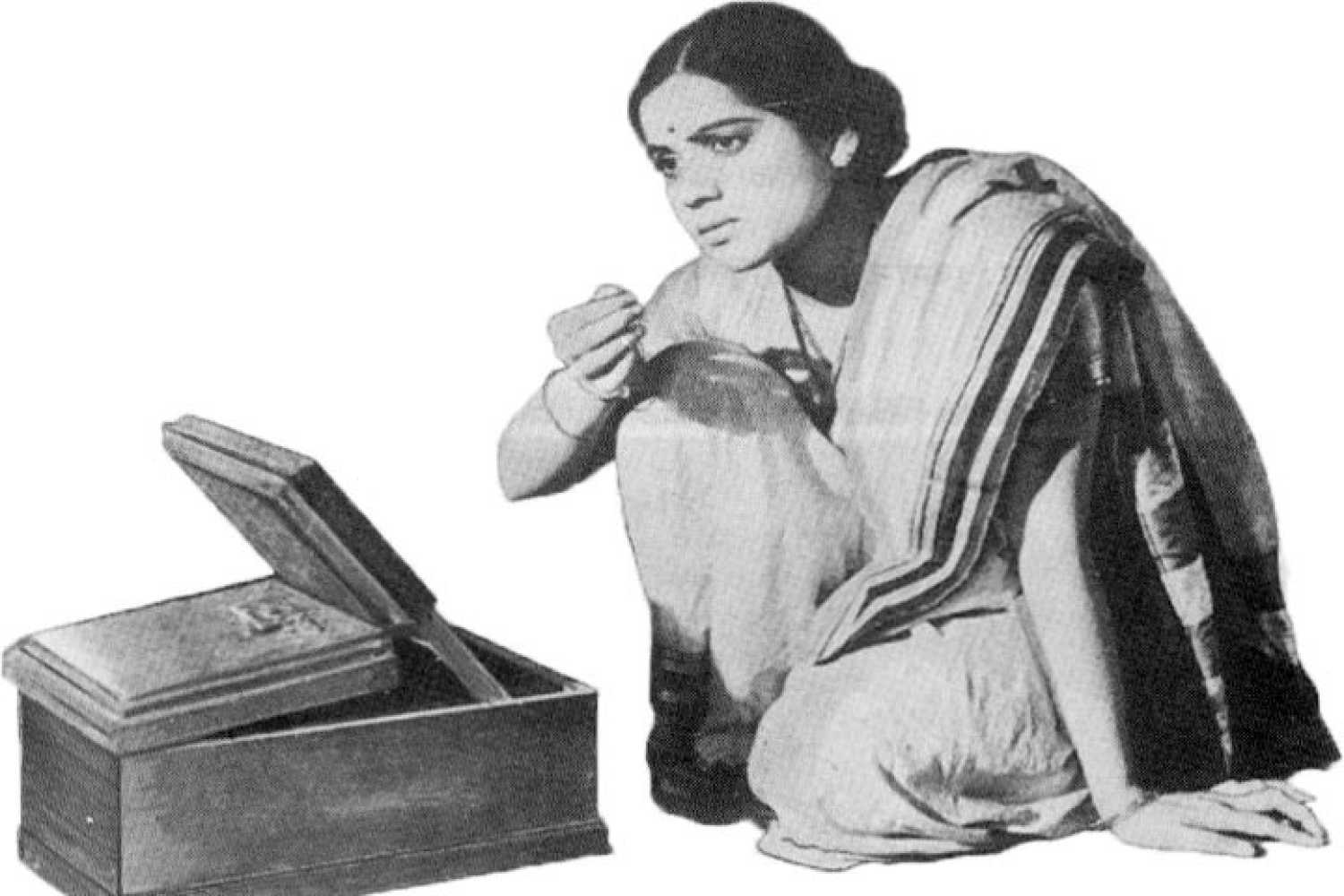A fiery actress and gifted singer, Shanta Apte remains one of the more compelling early woman stars of Indian cinema, with her refusal to bow to societal conventions. On her death anniversary, we take a look at her life and career in film.
Remembering Shanta Apte, the 'stormy petrel' of Indian cinema
New Delhi - 24 Feb 2020 19:00 IST


Sukhpreet Kahlon
Among the early woman stars of Indian cinema, we usually think of Fearless Nadia as the swashbuckling heroine who played her roles with gusto. However, there was another heroine equally feisty and rebellious if not more so — Shanta Apte.
Born in Maharashtra, Shanta Apte was a trained singer who would sing at the local Ganpati festival. Encouraged by her elder brother and supported by her mother, three sisters and five brothers, she decided to explore her talent for singing further.
With the advent of sound in cinema, there was a demand for artistes who could not only act, but sing as well. As the 1930s became the decade of the singing stars, Kundan Lal Saigal, Kanan Devi and Shanta Apte became the new stars of Indian cinema.
Apte’s voice contrasted with the mainly melancholic melodies rendered by Saigal and Kanan Devi as she sang songs with a certain passion and zest.
Although she did a role in Shyam Sunder (1932) as a teenager, it was only when Prabhat Studios moved to Pune from Kolhapur in 1934 that she really got an opportunity in the movies.
Prabhat mostly engaged with social issues of the time and Apte’s first film with the studio was Amrit Manthan (1934), which was also the first film to be shot on the studio's new premises in Poona (which now houses the Film and Television Institute of India and the National Film Archive of India).
Set in the Buddhist period, the film examined primitive religious practices and featured a high priest who believes in human sacrifice to appease the gods. The songs from the film became huge hits and a spate of films followed for Apte, who became one of the three woman stars of the studio, along with the redoubtable Durga Khote and Shanta Hublikar.

Her next film, Amar Jyoti (1936), looked at the oppressed condition of women, but the film that brought her the most recognition as an actress and made her a star was V Shantaram's Duniya Na Mane (1937) aka Kunkoo in Marathi.
In Duniya Na Mane/Kunkoo, Apte played a young woman tricked into marrying a man much older than her. Instead of quietly accepting her fate, she protests against the union and refuses to consummate the marriage. The film saw Apte’s character going from a carefree to a determined woman and gave her ample scope for displaying her acting talent.
Apte also sang an entire song in English in the film, A Psalm Of Life by the nineteenth century American poet Henry Wadsworth Longfellow!
In one scene in the film, Apte's Nirmala beats up her stepson (played by Raja Nene) with a stick. The late film critic and chronicler Bapu Watve, in his book on Prabhat Studios titled Ek Hoti Prabhatnagari or Such Was the World of Prabhat, wrote, “In one scene from Kunkoo (Duniya Na Mane), the heroine thrashes her frivolous stepson with a stick. As the cardboard sticks specially made for the shot kept breaking, Shanta Apte flogged Raja Nene with a real cane. Since two versions of the film were simultaneously made in Marathi and Hindi, poor Raja Nene got beaten black and blue.”

Apte could wield a cane with equal facility in real life too, as Filmindia editor Baburao Patel discovered to his cost when he attacked her in print!
Apte’s mercurial nature was well known and the star had several disputes with the studio and even went on a hunger strike to protest against the treatment meted out to her by directors of the company.
According to Sarah Niazi, who examined the matter in detail, “Her mode of protest was criticized as 'evidence of the rapid advance of the Indian film industry and its adoption of Western technique'.” The newspapers of the time also sided with Prabhat, showing Apte in the most unflattering light.
Shanta Apte also acted in Rajput Ramani (1936), Wahan (1937) and Gopal Krishna (1938) for Prabhat. Thereafter, she acted in films like Debaki Bose’s Apna Ghar (1942) (Aple Ghar in Marathi), Moti Gidwani‘s Zamindar (1942), Nandlal Jaswantlal’s Kadambari (1944) and Bhalji Pendharkar’s Valmiki (1946). Her popularity started to wane thereafter and her last noticeable role was in Swayam Siddha (1949), though she continued to act into the 1950s.
Mrinal Pande in her article on early cinema actresses has written about the rebellious nature and vitality of Apte, both on and off screen. Called the 'stormy petrel' of Indian films, she was open about her unconventional lifestyle, enjoying her drink in public and being decidedly unapologetic about her behaviour.
Apte wrote her autobiography, Jau Mi Cinemat (Should I Join the Movies), in which she talked about the structure of the film industry and an actor’s place in it. It is interesting that though her contemporary, Durga Khote, also wrote an autobiography, the two were poles apart, with Apte examining the people who made up the power structure in the industry and warning of the pitfalls for an artiste.
Although she enjoyed an illustrious career, Apte had an unfortunate and steady fall from grace, as, like several actresses, she was preyed upon by her family, who lived off her and then abandoned her. Talking about this, Pande wrote, “Shanta Apte’s life is salient evidence that whether in life or in a particular profession, equal remuneration without equal power for women usually means their returning or being forced to revert to their usual slots in the hierarchy once they retire from their chosen profession.”
Shanta Apte died on 24 February 1964. She was only 47 years old.

